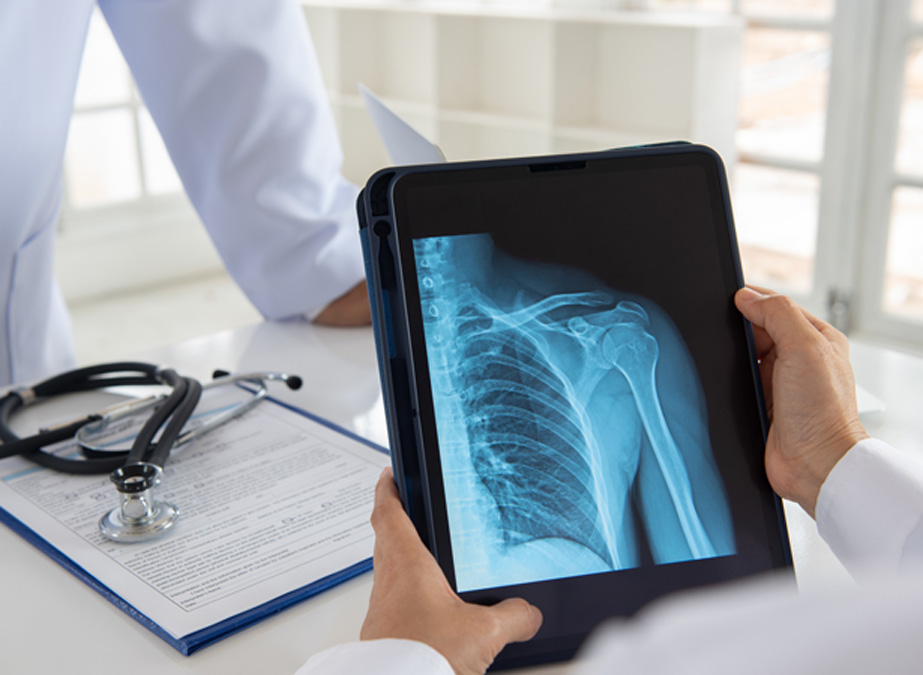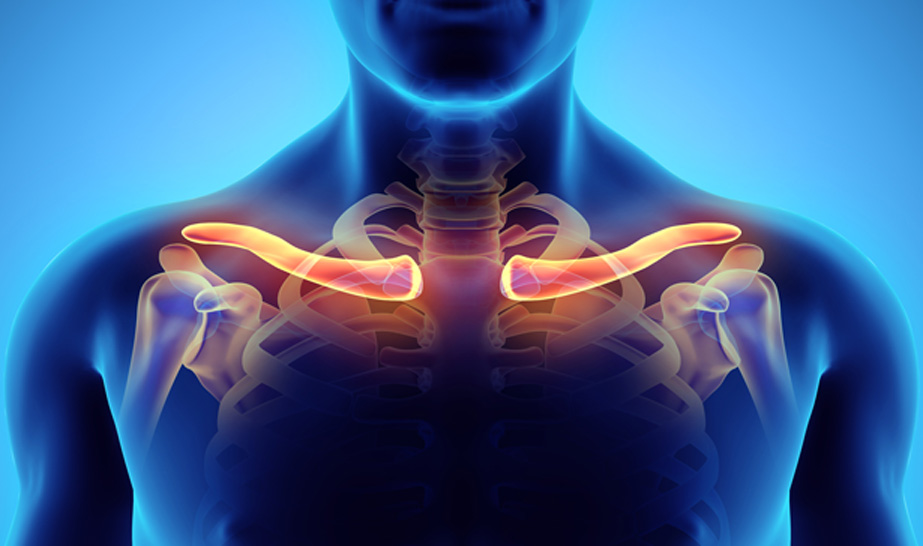
The collarbone is a slightly S-shaped bone that connects the breastbone to the shoulder.
Cartilage connects one side of the collarbone to the acromion, which is a part of the shoulder bone. This connection is called the acromioclavicular joint. The other end of the collarbone is connected to the sternum at the sternoclavicular joint.
4 Common Causes of Collarbone Pain
Collarbone or shoulder pain may be caused by:
1. Collarbone Fracture
A fracture may be caused by a sports injury, a vehicle accident or a birth accident. The collarbone is one of the most commonly broken bones in the human body because of its position in the body. Signs of a broken collarbone include swelling, bruising, tenderness and stiffness in the injured arm.
This condition may be caused by an old injury or everyday use over many years. Symptoms of this condition may include pain and stiffness in the affected joint.
3. Thoracic Outlet Syndrome
Weak shoulder muscles may cause the clavicle to slide down, placing pressure on the nerves and blood vessels in the thoracic outlet, which is the space between the clavicle and the highest rib. This may cause pain in the collarbone, even though the bone is not injured. Symptoms of thoracic outlet syndrome include:
- Pain in the hand, neck, shoulder or collarbone
- Muscle wasting in the fleshy part of the thumb
- Weakened grip
- Tingling or numbness in the arm or fingers
- Change in color in the hands or fingers
- Swelling or pain in the arm
- Weakness in the arm or neck
- Painful lump at the collarbone


Shoulder injury may involve a separation of the acromioclavicular joint (ACJ). This type of joint injury means the ligaments responsible for stabilizing the joint and keeping the bones in place are torn. Symptoms of this condition may include pain and tenderness around the collarbone and a bulge above the shoulder.
What to Expect During a Acromioclavicular Joint Injection Procedure
The ACJ may be treated with a corticosteroid injection. The injection may be performed anteriorly, posteriorly or superiorly.
The procedure will begin with the physician cleaning the injection site with an antiseptic. The physician will use an x-ray to find and visualize the ACJ. Next, the physician will insert a small needle into the joint and inject the anesthetic and cortisone derivative. The entire procedure will take about 15 minutes.
Side Effects and Risks of an Acromioclavicular Joint Injection
Side effects may include:
- Hyperglycemia
- Sweats
- Hot/cold flashes
- Flushing of the face
- Hypertension
- Osteoporosis
- Insomnia
- Mood swings
- Cushing’s Syndrome
Risks may include:
- Pain at the injection site
- Bleeding, infection and/or bruising at the injection site
- Increased pain at the injection site
Patients should speak to their physician to determine if an acromioclavicular joint injection is the best option for them.
How to Prepare for the Procedure
Patients should stop taking aspirin or products containing aspirin (greater than 324 mg/day) seven days before the procedure.

